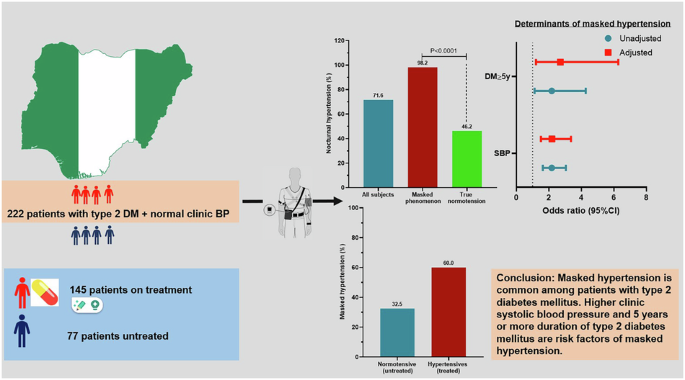DALBANDIN: Security forces successfully eliminated six Fitna-al-Hindustan terrorists during an operation in Dalbandin, Chagai district, Balochistan.
As per security forces sources, the terrorists had taken refuge in a cave under continuous aerial…

DALBANDIN: Security forces successfully eliminated six Fitna-al-Hindustan terrorists during an operation in Dalbandin, Chagai district, Balochistan.
As per security forces sources, the terrorists had taken refuge in a cave under continuous aerial…

Government ambitions in space are approaching what some may still think of as science fiction. In August 2025, NASA set a 2030 target for construction of a lunar nuclear reactor to support the US-led and EU-supported Artemis program’s plan for a permanent moon base. While this target faces significant technical and financial challenges, it reflects a real sprint to outcompete autocratic rivals. China and Russia are coordinating on a similar “International Lunar Research Station” powered by a nuclear reactor for completion in the mid-2030s.
Emerging technologies are key drivers of this new space race. Analysts with experience at the European Space Agency, NASA, MIT, and in the private space sector argue that these technologies could make a cislunar economy—economic activity spanning Earth, the Moon, and the space between—feasible by mid-century, though experts debate when key capabilities will mature. Key technologies include:
The United States and the EU already support these industries; the EU’s draft Space Act and the Trump administration’s August executive order on commercial space development each signal backing for the industry. Yet, staying ahead of China demands more. Allies should leverage complementary strengths by investing in each other’s commercial space sectors and reducing barriers to integrating advanced capabilities. These steps will not suffice by themselves, but they would materially boost competitiveness—positioning the United States and the EU to outpace China and unlock the cislunar economy.

Humans evolved large brains and flat faces at a surprisingly rapid pace compared to other apes, likely reflecting the evolutionary advantages of these traits, finds a new analysis of ape skulls by UCL researchers.
The paper, published in the…

Franklin SS, O’Brien E, Thijs L, Asayama K, Staessen JA. Masked hypertension a phenomenon of measurement. Hypertension. 2015;65:16–20.
Google Scholar
Williams B, Mancia G,…

Japan’s Hashimoto Daiki captured the men’s all-around gold medal Wednesday evening (22 October) at the 2025 World Gymnastics Championships in Jakarta, Indonesia.
The 24-year-old earned a total score of 84., holding off an impressive challenge…

NEW YORK, Oct. 22, 2025 (GLOBE NEWSWIRE) — LayerX Security, the leader in enterprise browser security, today announced that it is the first browser security company to support OpenAI’s newly released agentic AI browser, ChatGPT Atlas. This…
This request seems a bit unusual, so we need to confirm that you’re human. Please press and hold the button until it turns completely green. Thank you for your cooperation!

– Advertisement –
ISLAMABAD, Oct 22 (APP):Prime Minister Muhammad Shehbaz Sharif on Wednesday lauded the services of Federal Secretary for Information and Broadcasting, Ambreen Jan, during her farewell call at the Prime Minister’s…

He was a pioneer of electronic music whose band Kraftwerk redefined the sound of pop and influenced artists from David Bowie and New Order to Coldplay and Run-DMC.
Now the electronic equipment and musical instruments Florian Schneider used to…

With 120+ Pre-Built AI Models, the Workday Contract Intelligence Agent Helps Customers Quickly Analyze Contracts, Flag Risks, and Gain Insights Across HR, Finance, Legal, IT, and More
PLEASANTON, Calif., Oct. 22, 2025 /PRNewswire/ — Workday, Inc. (NASDAQ: WDAY), the enterprise AI platform for managing people, money, and agents, today announced a new Custom AI Model Library for the Workday Contract Intelligence Agent, powered by Evisort. The library includes more than 120 pre-built AI models trained to identify key clauses, risks, line items, and terms in contracts — from HR agreements to vendor contracts to sales deals. By giving organizations access to these specialized models, Workday is enabling faster contract reviews, earlier risk detection, and significantly less manual effort.
The Workday Contract Intelligence Agent already helps legal and business teams make smarter decisions by reviewing contracts at scale to flag risks, track obligations, and uncover opportunities. With the addition of the Custom AI Model Library, customers can now automatically analyze a wider range of contract terms — from employment agreements and vendor security clauses to payment schedules, data privacy obligations, and renewal provisions — across HR, Finance, Legal, IT, and Sales. The new models are pre-trained and ready to deploy, but customers can also refine them further by simply providing feedback — no coding required.
“AI in the enterprise often delivers piecemeal automation without true transformation,” said Jerry Ting, vice president, head of agentic AI & Evisort, Workday. “We aren’t just adding features; we are giving our Contract Intelligence Agent new skills that help solve real business problems. Our goal is to make deep, complex contract analysis fast and actionable for every team.”
The Custom AI Model Library delivers a deeper level of contract analysis by enabling models to summarize, calculate, and classify key terms — turning complex documents into actionable insights. With these new models, teams can:
For more information
About Workday
Workday is the enterprise AI platform for managing people, money, and agents. Workday unifies HR and Finance on one intelligent platform with AI at the core to empower people at every level with the clarity, confidence, and insights they need to adapt quickly, make better decisions, and deliver outcomes that matter. Workday is used by more than 11,000 organizations around the world and across industries – from medium-sized businesses to more than 65% of the Fortune 500. For more information about Workday, visit workday.com.
© 2025 Workday, Inc. All rights reserved. Workday and the Workday logo are registered trademarks of Workday, Inc. All other brand and product names are trademarks or registered trademarks of their respective holders.
Forward-Looking Statements
This press release contains forward-looking statements including, among other things, statements regarding Workday’s plans, beliefs, and expectations. These forward-looking statements are based only on currently available information and our current beliefs, expectations, and assumptions. Because forward-looking statements relate to the future, they are subject to inherent risks, uncertainties, assumptions, and changes in circumstances that are difficult to predict and many of which are outside of our control. If the risks materialize, assumptions prove incorrect, or we experience unexpected changes in circumstances, actual results could differ materially from the results implied by these forward-looking statements, and therefore you should not rely on any forward-looking statements. Risks include, but are not limited to, risks described in our filings with the Securities and Exchange Commission (“SEC”), including our most recent report on Form 10-Q or Form 10-K and other reports that we have filed and will file with the SEC from time to time, which could cause actual results to vary from expectations. Workday assumes no obligation to, and does not currently intend to, update any such forward-looking statements after the date of this release, except as required by law.
Any unreleased services, features, or functions referenced in this document, our website, or other press releases or public statements that are not currently available are subject to change at Workday’s discretion and may not be delivered as planned or at all. Customers who purchase Workday services should make their purchase decisions based upon services, features, and functions that are currently available.
SOURCE Workday Inc.
For further information: For further information: Investor Relations: ir@workday.com, Media Inquiries: media@workday.com